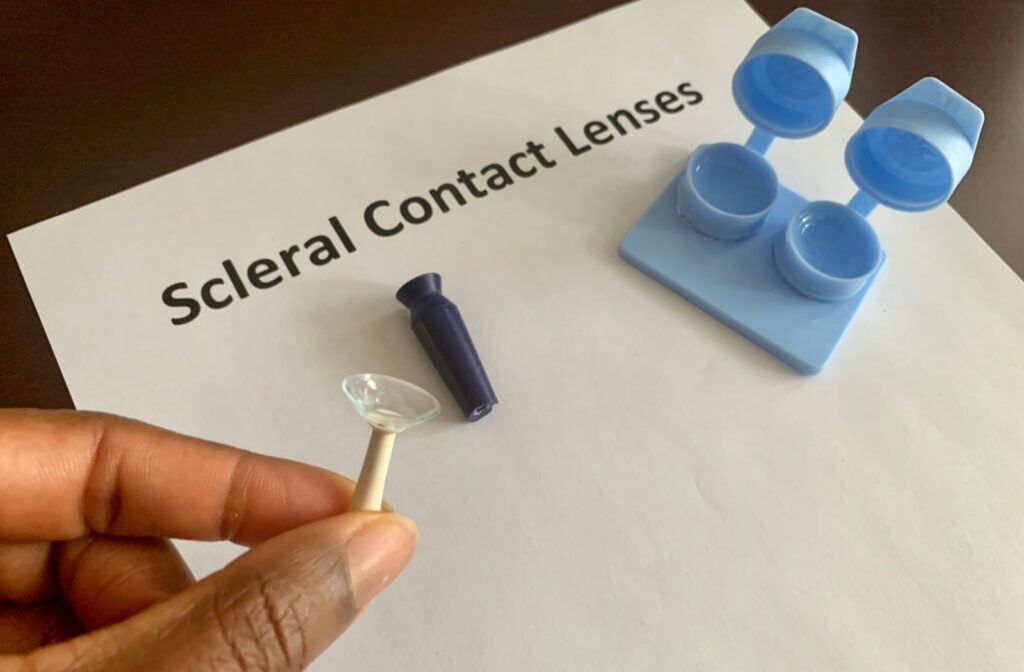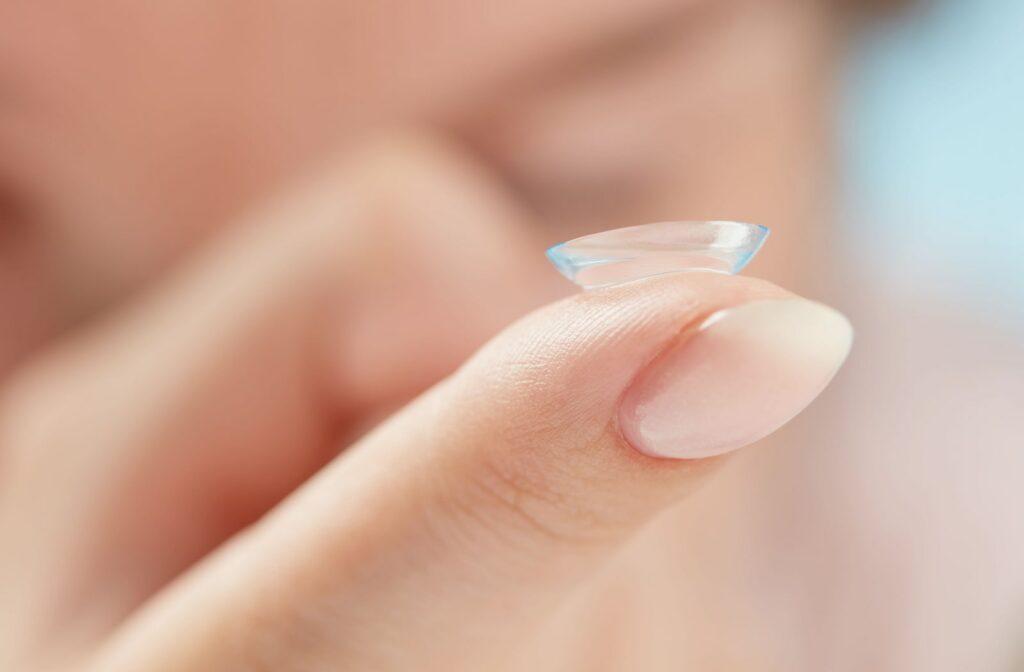You’re not alone if you’re wondering why your eyes are so dry. Millions of Americans suffer the uncomfortable symptoms of dry, irritated eyes. Sometimes, dealing with dry eye disease is as simple as changing or adjusting what you eat.
On the other hand, sometimes dry eye symptoms get so bad that it makes wearing most contact lenses almost impossible. Some special contacts, like scleral contact lenses, may be an option to wear with dry eyes.
And in more mild cases of dry eye, soft contact lenses are sometimes suitable. Keep reading to learn about a few contact options you can discuss with your eye doctor. We’ll also review what dry eye is and some potential treatment options, so you can get back to wearing contacts.
What Is Dry Eye Disease?
When your eyes are unable to produce enough tears, or they produce low-quality tears, they can become dry and irritated. If this becomes a chronic condition, it’s called dry eye disease or simply “dry eye.”
There are two primary subtypes of the condition: aqueous deficiency (not enough tears) or evaporative (premature tear evaporation). Dry eye has no single cause, but there is a fair bit of overlap between the two types:
- Age
- Not enough blinking
- Certain medical conditions, like arthritis, Parkinson’s disease, diabetes, or previous eye surgery
- Certain medications, such as allergy or blood pressure meds
- Preservatives in eye drops
- Hormone replacement therapy
- Corneal nerve desensitivity due to contact lens use
- Blepharitis or meibomian gland dysfunction (MGD)
Treatment
Fortunately, there are some excellent treatment options available. It’s important to remember that you should consult with your eye doctor before trying any treatments, even natural home remedies.
At-home and in-office treatments may include:
At-Home Treatment
- Lubricating eye drops (preservative-free for long-term use)
- Warm compresses on your eyes
- Massaging eyelids
- Keeping the air humid
In-Office Treatment
- Manual expression: Typically, the eye doctor uses a special warm compress to loosen oils and debris. Then they manually express your eye’s meibomian glands.
- OptiLight: This is an intense pulsed light (IPL) therapy that is non-invasive and safe. It’s approved by the FDA to help treat chronic dry eye symptoms.
- LipiFlow: Warmth is the key to this treatment. The eye doctor loosens the oils in the glands around them by using the LipiFlow device.
- BlephEx: Although you may clean your eyelids well at home. Sometimes, they need a deep clean. This is where the BlephEx technology helps. It gently cleans and exfoliates your eyelids for a deep clean.
- LipiView: This tool helps the eye doctor diagnose the root of your dry eyes, which enables them to determine the best course of action for treatment.
Potential Dry Eye Complications
Dry eyes do not threaten your vision or eye health in most cases. But if left untreated, some complications could arise, they include:
- Damage: Without the lubricating layer or tears on your eye, there is the potential for abrasion damage to the cornea’s surface.
- Discomfort: Your general quality of life and comfort could significantly decrease without controlling the dry eye symptoms.
- Infection: In addition to lubricating your eyes, your tears have another job. They create a protective layer on your eye that helps prevent infection. If the dryness is left untreated, the potential for infection goes up.

Contact Lens Options with Dry Eyes
Even if contact lenses aren’t the cause of your dry eyes, the dryness typically prevents you from being a candidate for most contact lenses. But there are some potential options you can discuss with your eye doctor:
- Scleral lenses: Unlike a traditional contact lens, a scleral lens spans the iris (the colored portion of the eye) and rests on the scleral (white part). It also contains a pocket of solution in the center to further hydrate the eye.
- Soft contact lenses: Many people wear soft contact lenses. Some of them are even suitable for someone with dry eyes. If choosing a soft contact lens, your eye doctor will likely point you towards a daily lens and a brand with the highest water content.
- Changing solution: If you’re using a solution that isn’t meant for contact lenses, you may find the preservatives irritate your eyes and make them feel dry. It’s important to ensure you’re using a solution that’s designed for contact lenses.
Talk to Us About Your Contact Lens Options
Dry eyes shouldn’t force a person to pick the frames back up. But untreated, dry eye could prevent you from wearing contact lenses. It could even make you ineligible for laser eye surgery if you wanted to pursue that as a solution.
Talk to the team at Precision Eye Center and request an appointment. You can discuss your dry eyes and vision needs with the optometrist. After examining your eyes, they can recommend the best treatment.





